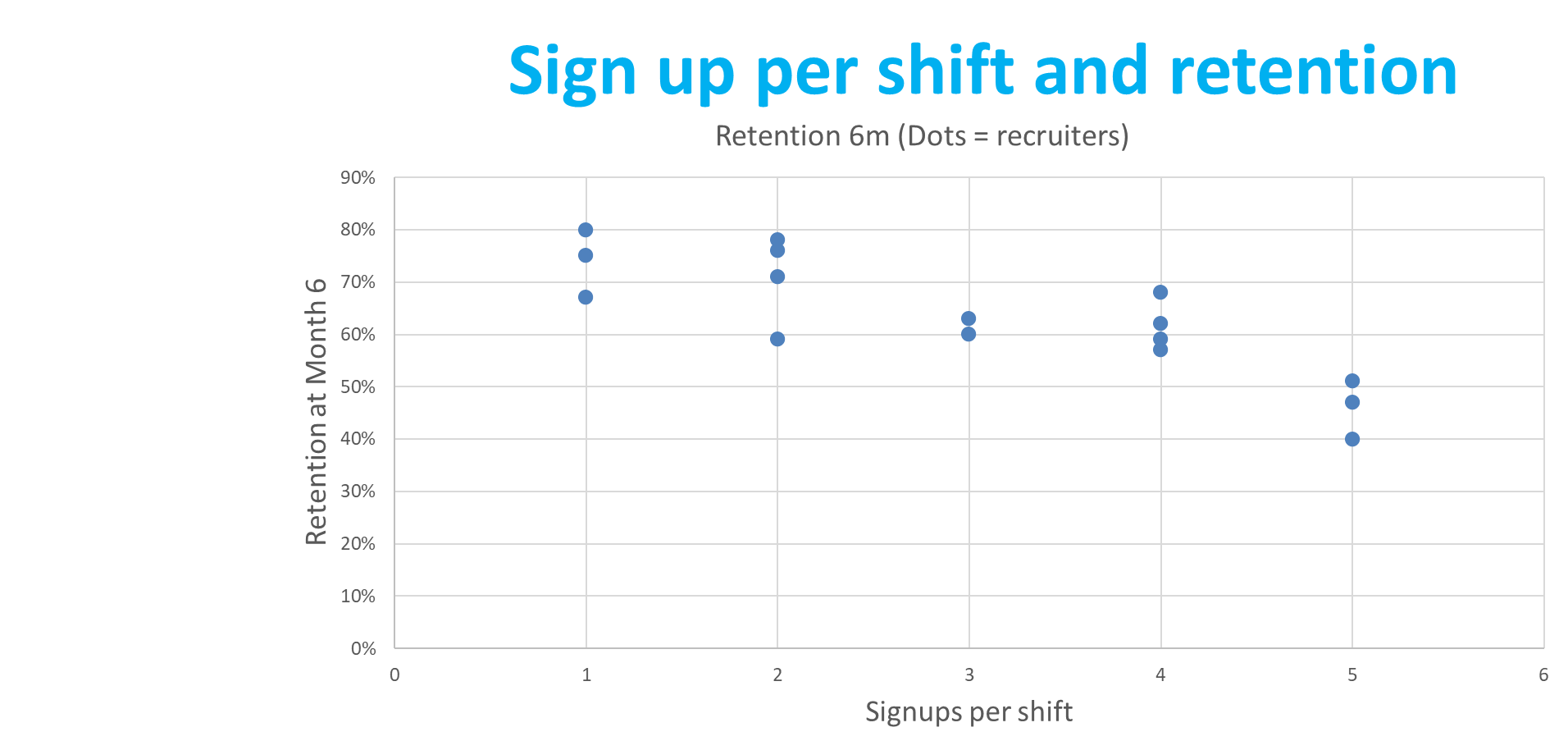The Volume Model Kills, Quickly
The fundraising metric paradox, no single metric is useful in isolation and yet running your program on that single metric has the power to kill your program. And the irony sauce to go with the paradox main course? It kills quickly but you notice it too slowly.
There are plenty of examples, response rate or average gift. These are like one-hand clapping. Same for cost to acquire. Lifetime value is the solve but how many organizations run that way. Hardly any. And even if you look at LTV is that at a supporter level or channel? The latter is probably more likely. And even if at a supporter level you’re forever solving for the question of whether you’re optimizing among the best of the best choices or just the best of the ones you’ve been executing – local vs. global.
But set that larger, thornier question aside. Look at this chart for F2F. Guess who is making money on the high number of signups per shift and who is losing their shirt? Agency and charity, respectively. 
But hey, the agency is mostly being held to account on a quoted number of signups at a quoted price per signup. Yeah, they produced a pro forma whose rosy retention metrics fell apart the minute they were exposed to sunlight but that price per and contract tied to volume holds up as long as the charity lets it.
Signups per shift is barely useful to understand your program while also paradoxically being powerful enough to kill your ROI. The same holds for the sustainer ask amount though the relationship isn’t always linear.
Having said that, if you think a $30/month donor retains at the same rate as a $20 donor (all other things equal) then I’ve got ocean property in Oklahoma waiting for you.
That same property is available to those who think the one-off donor isn’t quitting at roughly the same rate as the monthly donor just because we can’t see the month over month falloff in our payment processor. The same decision calculus is being made for one-off and monthly – did giving increase make me feel psychologically satisfied? – and in roughly the same timeframe.
Back to our chart, what’s going on in this data? Incentives matter and if you’re judged on volume you’ll deliver volume. Also, I’ll wager dollars to doughnuts that the fundraisers are heavily incentivized on signups per shift and that incentive comp represents a sizeable chunk of their total compensation. You gotta eat and sometimes that means going full Ben Affleck, Boiler Room. Guilt and pressure or just super high energy can work in the moment.
Kevin


